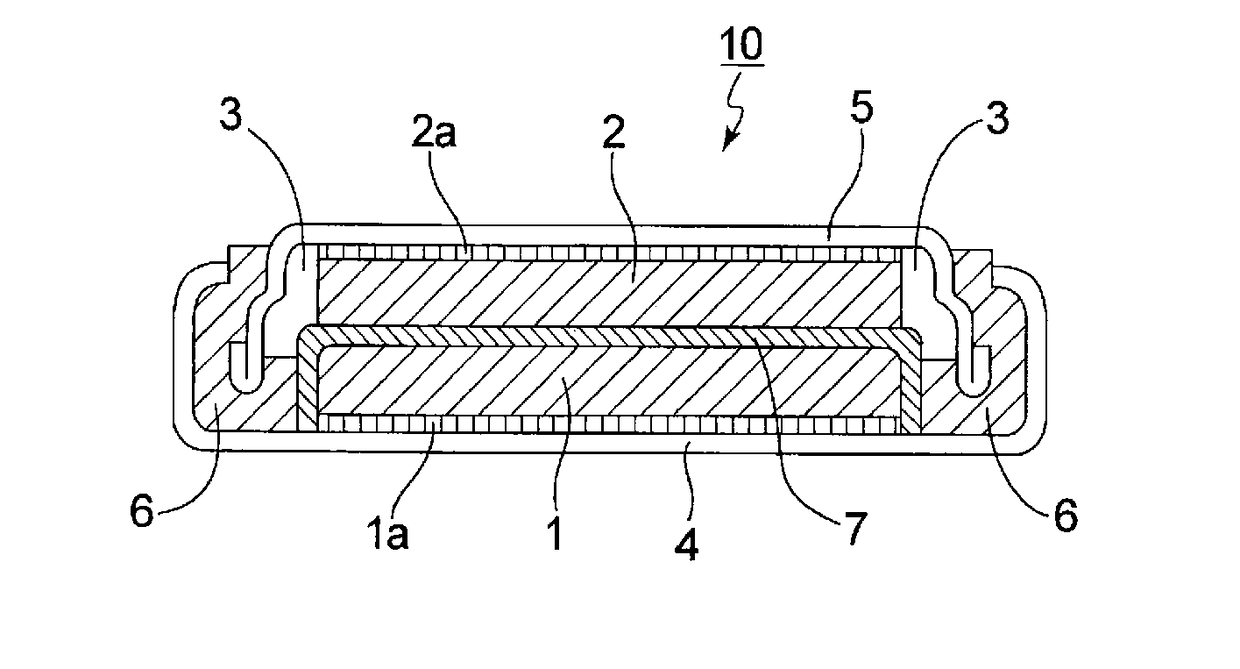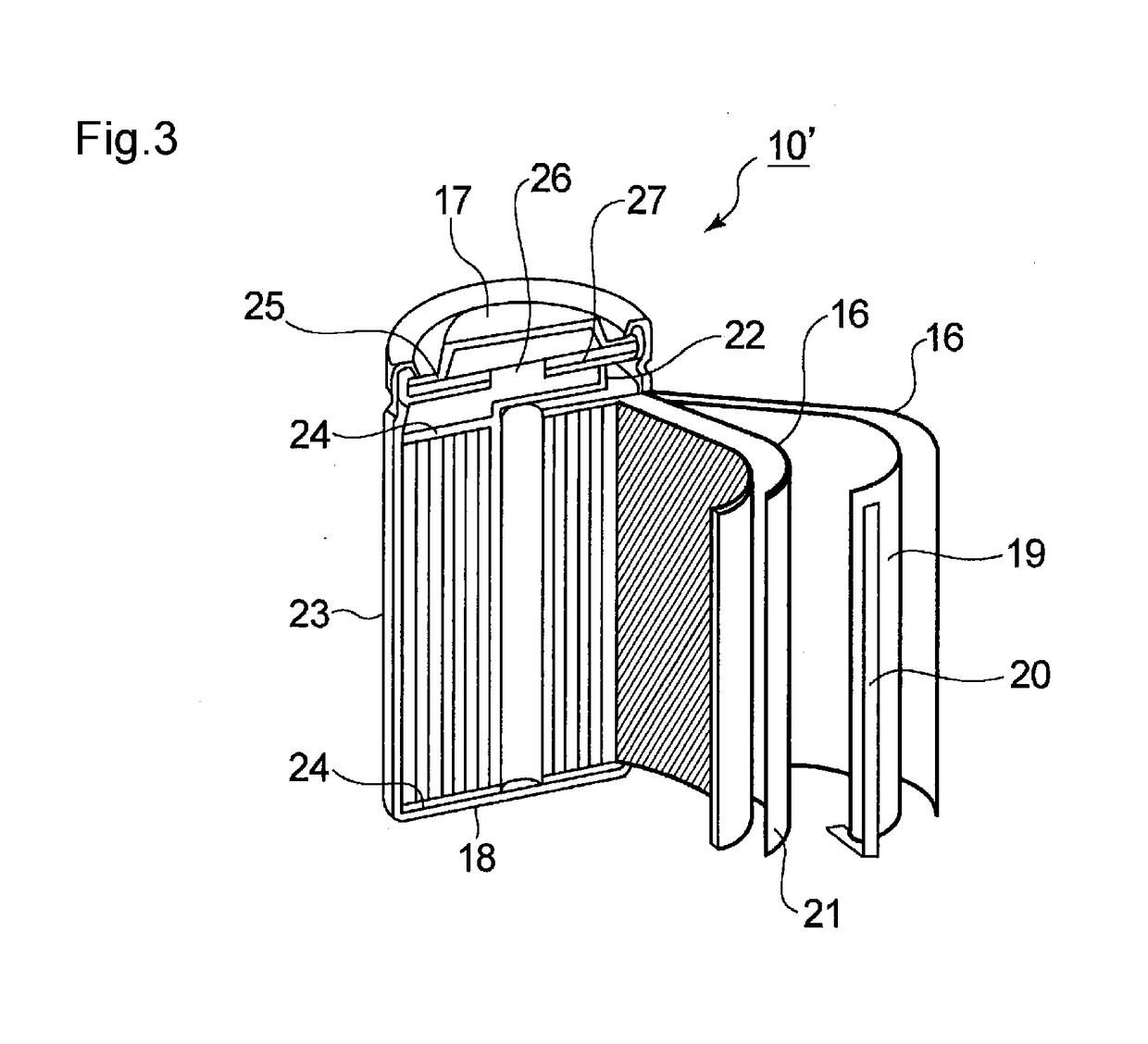Nonaqueous electrolyte solution and nonaqueous electroplyte secondary battery
a technology of nonaqueous electrolyte and secondary battery, which is applied in the field of nonaqueous secondary battery, can solve the problems of reducing capacity and power, increasing internal resistance, and affecting the performance of secondary cells,
- Summary
- Abstract
- Description
- Claims
- Application Information
AI Technical Summary
Benefits of technology
Problems solved by technology
Method used
Image
Examples
synthesis example 1
Synthesis of Compound No. 1-1
[0106]In a flask was put 6.397 g (49.9 mmol) of 2-thiophenecarboxylic acid and dried under reduced pressure. After purging with argon, 30.0 ml of butyl acetate was added, and the system was heated to 80° C. To the mixture was slowly added dropwise 6.75 ml (32.5 mmol) of 1,1,1,3,3,3-hexamethyldisilazane, followed by stirring at 100° C. for 3 hours. The reaction mixture was evaporated, and the residual crude product was distilled on an oil bath (bath temperature: 90° C.; vapor temperature: 64° C.; 1.0 mmHg) to give 3.06 g (yield: 31%) of a colorless liquid, which was identified to be the desired compound by 1H-NMR and IR analyses. The identification data are shown in Table 1 below.
synthesis example 2
Synthesis of Compound No. 2-1
[0107]In a flask was put 5.098 g (34.0 mmol) of 2,2′-thiodiglycolic acid and dried under reduced pressure. After purging with argon, 30.0 ml of butyl acetate was added, and the system was heated to 80° C. To the mixture was slowly added dropwise 9.18 ml (44.1 mmol) of 1,1,1,3,3,3-hexamethyldisilazane, followed by stirring at 100° C. for 3 hours. The reaction mixture was evaporated, and the residual crude product was distilled on an oil bath (bath temperature: 150° C.; vapor temperature: 129° C.; 5.4 mmHg) to give 5.759 g (yield: 57.6%) of a colorless liquid, which was identified to be the desired compound by 1H-NMR and IR analyses. The identification data are shown in Table 1.
synthesis example 3
Synthesis of Compound No. 2-2
[0108]In a flask was put 5.929 g (28.2 mmol) of (ethylenedithio)diacetic acid and dried under reduced pressure. After purging with argon, 30.0 ml of butyl acetate was added, and the system was heated to 100° C. To the mixture was slowly added dropwise 7.63 ml (36.7 mmol) of 1,1,1,3,3,3-hexamethyldisilazane, followed by stirring at 100° C. for 3 hours. The reaction mixture was evaporated, and the residual crude product was distilled on an oil bath (bath temperature: 180° C.; vapor temperature: 150° C.; 0.6 mmHg) to give 3.908 g (yield: 39.1%) of a white solid, which was identified to be the desired compound by 1H-NMR and IR analyses. The identification data are shown in Table 1.
PUM
| Property | Measurement | Unit |
|---|---|---|
| bath temperature | aaaaa | aaaaa |
| bath temperature | aaaaa | aaaaa |
| bath temperature | aaaaa | aaaaa |
Abstract
Description
Claims
Application Information
 Login to View More
Login to View More - R&D
- Intellectual Property
- Life Sciences
- Materials
- Tech Scout
- Unparalleled Data Quality
- Higher Quality Content
- 60% Fewer Hallucinations
Browse by: Latest US Patents, China's latest patents, Technical Efficacy Thesaurus, Application Domain, Technology Topic, Popular Technical Reports.
© 2025 PatSnap. All rights reserved.Legal|Privacy policy|Modern Slavery Act Transparency Statement|Sitemap|About US| Contact US: help@patsnap.com



